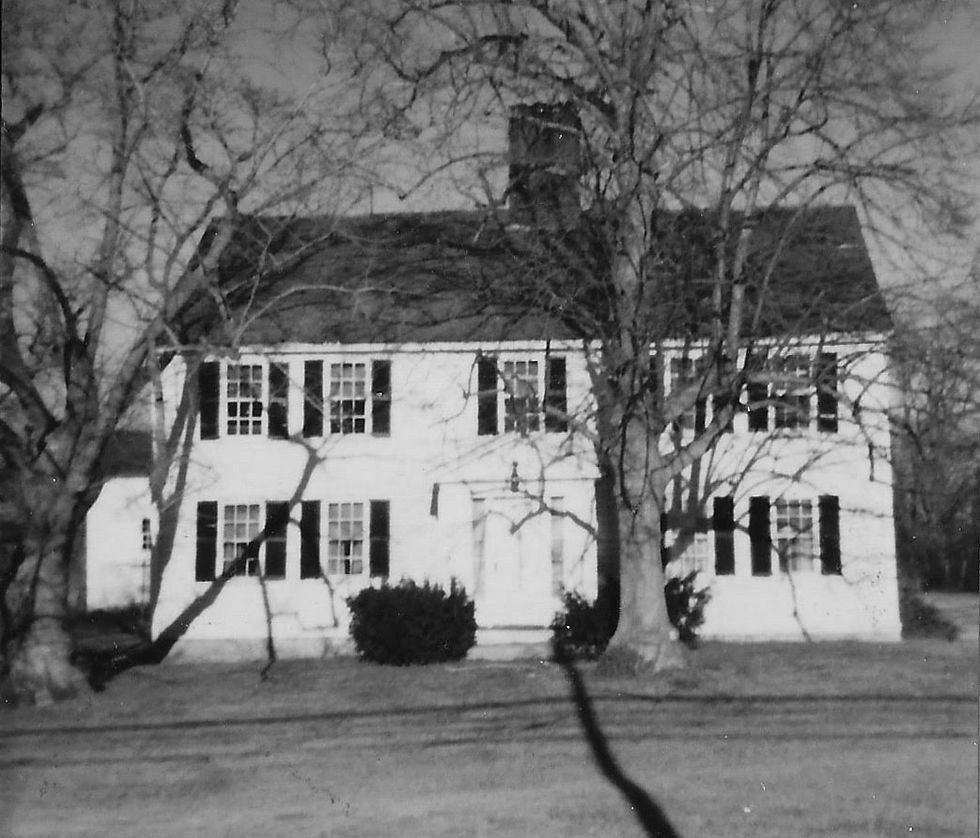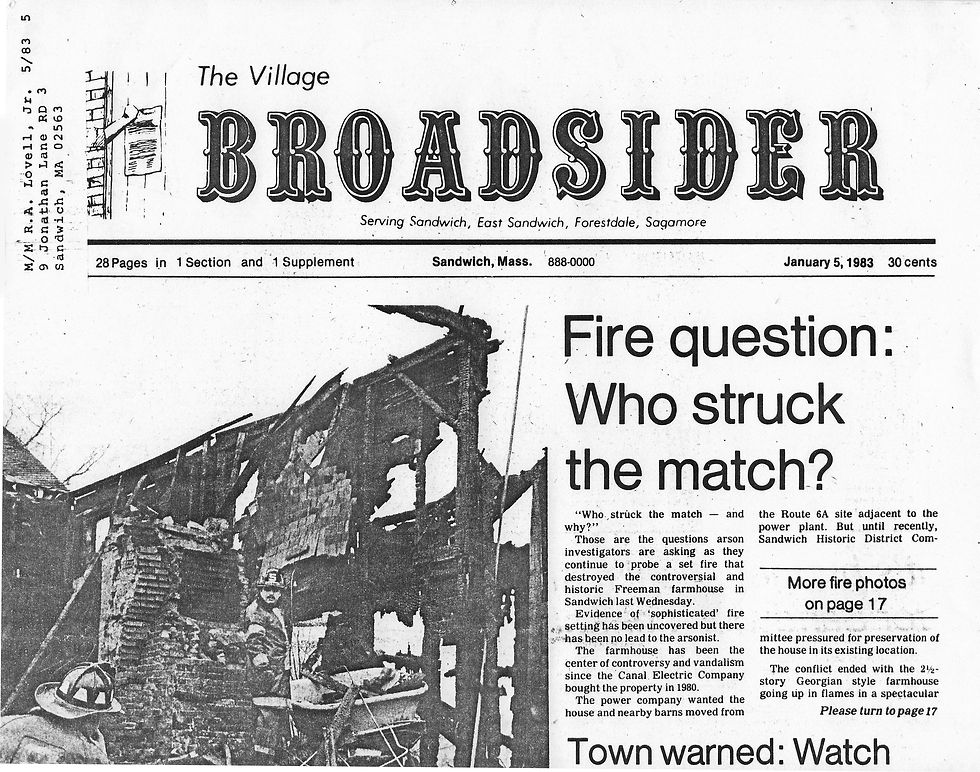Who Burned Down the Freeman Farm? (Part 2)
- Kaethe Maguire
- Jul 15, 2021
- 3 min read
When Edmund Freeman died in 1682, with his wife Elizabeth already deceased, the Freeman farmhouse went to his grandson, Matthew Ellis, who cared for him in his old age.
One of Edmund's later descendants was Nathaniel Freeman. Nathaniel became a town leader in the Patriot cause and he, much like Edmund, was also a natural leader. Nathanial was once attacked by Tories who almost killed him. He lived at 10 Grove Street and is buried in Old Town Burial Ground on Grove Street. Remember the Tories congregated at the Newcomb Tavern at 8 Grove Street.
Nathaniel’s daughter Sarah (1778-1852) married Shadrach Freeman and lived in Edmund’s farmhouse for 57 years. Watson Freeman (1798-1868) began the Freeman Burial Ground in 1827.
The house eventually passed to family, the Clarks, who used it primarily as a summer residence. Edward Clark retired and lived at the home full time until his death in 1950. It was still without electricity.

In 1930, the Mass Highway cut through the farm area to build a new section of Route 6A, endangering the formerly vast farm space. The new section of highway went right through what old-timers call Wilson’s Hill. Additionally, the location was not as desirable once Bourne left Sandwich 1884. The select board argued that the farm would never be a tourist site in that location, being so far from Sandwich village.
After 1950, the farm passed to Evelyn Fessenden Carpenter (1890-1978). She was the daughter of Charlotte Freeman Clark and John Slaughter Carpenter and married Everard Stowell Pratt of Sandwich. Evelyn was also the sole survivor of the next generation, which is how she came to inherit the Freeman farmhouse. The huge family was no more in these parts and greatly scattered.
The Fessendens turned the home and area into a showplace. Evelyn also did much to preserve certain elements of the "Saddle and Pillion" graves of Edmund and Elizabeth, located within the farm area.

Edmund Freeman had established the gravesite of two stones, which represented a saddle and pillion, upon the death of his wife Elizabeth (a pillion is a cushion or pad behind a saddle for a second rider). Tales tell us that Edmund and Elizabeth used to casually ride a horse over the whole property, with Elizabeth astride the pillion.
By 1919 the family had placed bronze plaques on the burial stones. Evelyn deeded the Saddle and Pillion site to the town of Sandwich to preserve it. The cemetery is located at the top of Wilson Road and can also be accessed off Tupper Road by foot, following a path up hill. It is quite unique. If you have not visited the site, take a walk up the path off Tupper Road, it's clearly marked.

Before she died, Evelyn decided to sell all but 11.5 acres surrounding the farm buildings, thinking that would protect the house. The Canal Electric tower and buildings were already in place.
Evelyn died in 1978 and her son, Everard Stowell Pratt Jr., living in Cincinnati, took over the selling of the property. He listed it for $225,000. This was considered a steep price for the times and the condition of the property.
As it turned out, the whole 11.5-acre parcel with buildings was sold to Canal Electric for $158,000. Most people could not afford the $225,000 and evidently didn't realize less would be accepted. The sale was completed on May 12, 1980.
It is putting it mildly to say that Evelyn Pratt’s son was disengaged. It was he who set the price of $225,000 with no restrictions attached. His interest appears to have been strictly financial.
This is the second of a three-part series.
Kaethe Maguire is a member of the Friends of the Sandwich Town Archives, a dedicated, all-volunteer, 501(c)(3) nonprofit committed to supporting and promoting the archives’ collections and the rich, diverse history of the town of Sandwich.




Comments